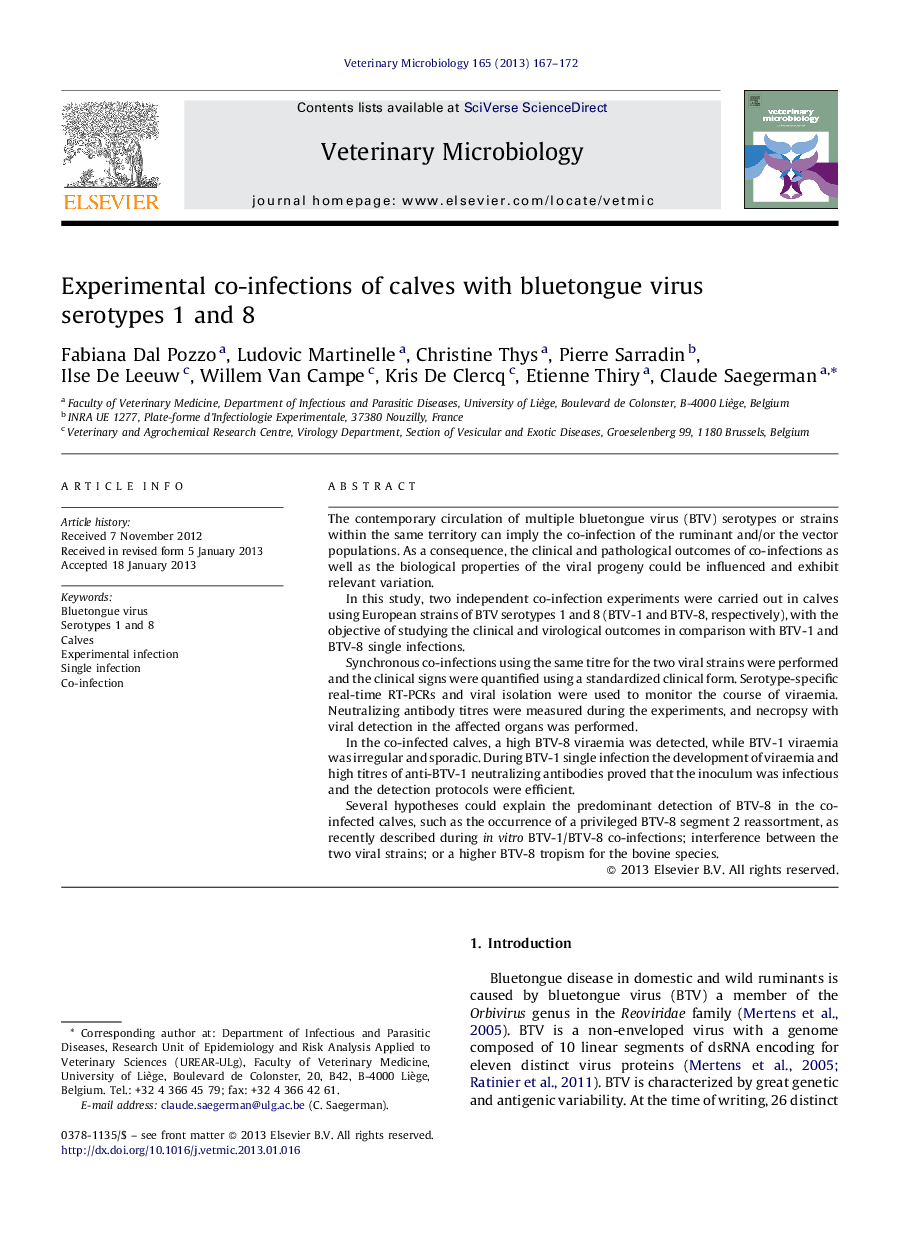| کد مقاله | کد نشریه | سال انتشار | مقاله انگلیسی | نسخه تمام متن |
|---|---|---|---|---|
| 2466735 | 1555373 | 2013 | 6 صفحه PDF | دانلود رایگان |

The contemporary circulation of multiple bluetongue virus (BTV) serotypes or strains within the same territory can imply the co-infection of the ruminant and/or the vector populations. As a consequence, the clinical and pathological outcomes of co-infections as well as the biological properties of the viral progeny could be influenced and exhibit relevant variation.In this study, two independent co-infection experiments were carried out in calves using European strains of BTV serotypes 1 and 8 (BTV-1 and BTV-8, respectively), with the objective of studying the clinical and virological outcomes in comparison with BTV-1 and BTV-8 single infections.Synchronous co-infections using the same titre for the two viral strains were performed and the clinical signs were quantified using a standardized clinical form. Serotype-specific real-time RT-PCRs and viral isolation were used to monitor the course of viraemia. Neutralizing antibody titres were measured during the experiments, and necropsy with viral detection in the affected organs was performed.In the co-infected calves, a high BTV-8 viraemia was detected, while BTV-1 viraemia was irregular and sporadic. During BTV-1 single infection the development of viraemia and high titres of anti-BTV-1 neutralizing antibodies proved that the inoculum was infectious and the detection protocols were efficient.Several hypotheses could explain the predominant detection of BTV-8 in the co-infected calves, such as the occurrence of a privileged BTV-8 segment 2 reassortment, as recently described during in vitro BTV-1/BTV-8 co-infections; interference between the two viral strains; or a higher BTV-8 tropism for the bovine species.
Journal: Veterinary Microbiology - Volume 165, Issues 1–2, 26 July 2013, Pages 167–172